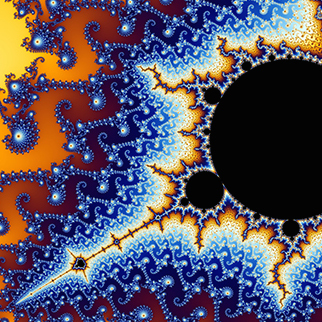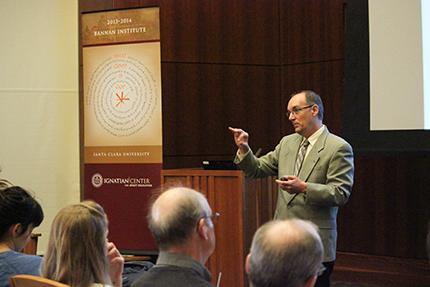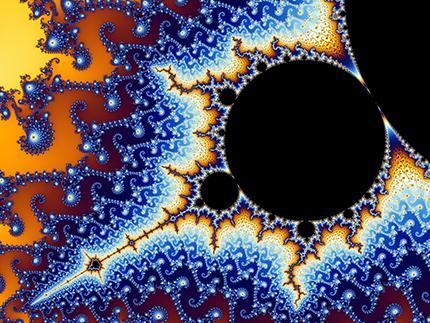
Science and Religion: In Search of a Common Ground
A Response to Br. Guy Consolmagno, S.J.
When I teach my class on science and religion, students often ask me whether my religious beliefs have anything to do with the way I conduct my research. My standard reply is that they do not, since the laws of nature and the rules of mathematics are not a matter of personal opinion. I hasten to add, however, that beliefs begin to matter a great deal when it comes to METAPHYSICAL INTERPRETATIONS of scientific results. Such interpretations should not be dismissed out of hand, since we have no reason to assume that scientific theories provide the only meaningful explanation of reality.
Comments of this sort usually raise a few eyebrows, since most of my students are not in the habit of questioning the supremacy of science. I therefore proceed cautiously, and ask them to consider what we can deduce from the chemical composition of a great painting. After some discussion, we generally agree that even if we were to find out everything that can be known about its molecular structure, this would tell us nothing at all about its meaning, or why we find it beautiful. If that is what we are interested in, we would have to look to disciplines such as philosophy, art history, psychology and theology, each of which offers its own unique explanation.
...we have no reason to assume that scientific theories provide the only meaningful explanation of reality.
At this point in the conversation, most (although not necessarily all) of my students conclude that scientific explanations cannot be automatically extended to the entire human experience, and that we must allow room for other forms of inquiry as well. The question then becomes one of boundaries—if the domain of science is indeed limited, how far does it extend? And is there any overlap at all with the domain of religion? While there are no easy answers to these questions, it might be helpful to frame them in terms of the following two claims, both of which resonate strongly with my own experience:
1. The way scientists and engineers go about their research is generally independent of their belief system, but the reason why they do it in the first place is not.
2. If scientific theories and mathematical rules are indeed something that we can all agree on, then perhaps this could be a natural starting point for a constructive dialogue between science and religion.

Let me say a few words about each claim, and try to justify its validity. Regarding the first one, I think that most mathematicians and scientists would agree that the pursuit of truth provides a powerful impetus for engaging in research and is often the driving force behind their work. For engineers, on the other hand, the situation is somewhat more complicated, since their research can never be completely separated from practical applications and users’ needs. As a result, their work is motivated not just by the desire to discover the truth, but also by a predisposition to design, create, and improve the lives of others. I am not suggesting, of course, that such considerations are unique to engineers—just that they are essential to what engineers do. Since they build things that other people need and use on a daily basis, the aesthetic appeal of what they produce matters, as does its impact on other human beings (as well as the environment). I think many of my colleagues would agree that this mix of theory and practice is a big part of what makes the engineering profession so attractive—it provides us with an endless series of opportunities to combine “the true, the good, and the beautiful,” in ways that are imaginative and diverse.
What I have said so far may perhaps describe what makes scientists and engineers “tick,” but it does not explain why we think that truth,
Although new facts about the universe are being discovered at an ever-increasing pace, its fundamental structure remains elusive, and we now know that there are certain things that we can never know (even in principle). The fact that science acknowledges the existence of unknowable truths about the physical world is quite remarkable, when you consider the implications.
goodness, and beauty are desirable in the first place. I can’t say that I have a clear answer to this question, but it seems to me that science is probably not the right place to start looking for it. Our ideas about what is and is not desirable are usually adopted from the tradition in which we are brought up and are in place well before we choose our profession. It therefore makes sense to begin by examining the roots of these traditional values, and that path will inevitably lead us to religion (since religious thought emerged long before philosophical thought). If we choose to follow this line of inquiry to its logical conclusion, we will find that although religion has little to do with the technical aspects of scientific research, it does provide the moral and aesthetic “preconditioning” that makes this work possible. The sense of “joy” that scientists and engineers experience in their work cannot be disassociated from their beliefs about what really matters, and the true source of these beliefs (at least, in my humble opinion) lies in the spiritual domain.
My second claim has to do with the fact that modern science portrays physical reality in a way that bears little resemblance to our everyday experiences. It is a thoroughly fascinating, counterintuitive, and often strikingly beautiful world, in which quantum particles continually pop in and out of existence, spacetime curves in the presence of matter, and uncertainty and novelty are the norm rather than the exception. Although new facts about the universe are being discovered at an ever-increasing pace, its fundamental structure remains elusive, and we now know that there are certain things that we can never know (even in principle).
The fact that science acknowledges the existence of unknowable truths about the physical world is quite remarkable, when you consider the implications. The mere possibility that the universe could be organized in such a manner inspires a sense of genuine wonder and awe, leading one to believe that scientists and theologians are really not all that far apart when it comes to fundamental questions about reality. Unfortunately, most nonexperts, unaware of recent developments in mathematics, physics, and system theory, continue to think of nature in terms of the traditional Newtonian paradigm, which maintains that physical processes are generally “well behaved” and predictable. As a result, they tend to believe that science can (and eventually will) answer all the fundamental questions that have perplexed humanity since the dawn of history.

Those who do have a solid understanding of modern science know better and tend to be much more open to the possibility that a deep mystery lies at the heart of the cosmic order. But even if this outlook prevails at some point in the future, it still doesn’t follow that we will achieve a consensus regarding the true nature of this mystery. It is likely that some of us will continue to embrace it as “good” and give it a “personal” dimension, while others will adopt a neutral and essentially indifferent attitude toward it. Both options are logically acceptable, and the differences between them should not be underestimated. Having said that, however, I should add that the existence of such differences does not imply that the scientific and religious worldviews are mutually exclusive. I fundamentally disagree with those who claim that science is the enemy of religion; I would argue instead that it is the enemy of superstition, which is a very different phenomenon. On this issue, I agree with Pope John Paul II, who wrote that: “Science can purify religion from error and superstition; religion can purify science from idolatry and false absurdities. Each can draw the other into a wider world, a world in which both can flourish.”1
To me, this seems like an excellent starting point for a constructive conversation. 2
Aieksandar I. Zecevic is a Professor of Electrical Engineering at Santa Clara University and the Associate Dean for Graduate Studies. His scholarly interests range from technical topics such as complex dynamic systems and chaos theory to aesthetics, ethics, and theology. His two recent books and his course on science and religion explore possible connections between these disciplines.
Endnotes
- Pope John Paul II, “Letter to the Rev. George V. Coyne, S.J., Director of the Vatican Observatory,” (June 1, 1988) in Robert J. Russell, William R. Stoeger, Pope John Paul II, George V. Coyne, John Paul II on Science and Religion: Reflections on the New View from Rome (Vatican Observatory Publications, 1990).
- For more on Professor Zecevic’s own contribution to this constructive conversation, see: “Unknowable Reality: Science, Mathematics, and Mystery,” lecture, 2013–2014 Bannan Institute: What Good Is God? series, January 28, 2014, Santa Clara University, at http://scu.edu/ic/publications/videos. cfm. Also, Truth, Beauty, and the Limits of Knowledge: A Path from Science to Religion (San Diego: University Readers, 2012) and The Unknowable and the Counterintuitive: The Surprising Insights of Modern Science (San Diego: University Readers, 2012).